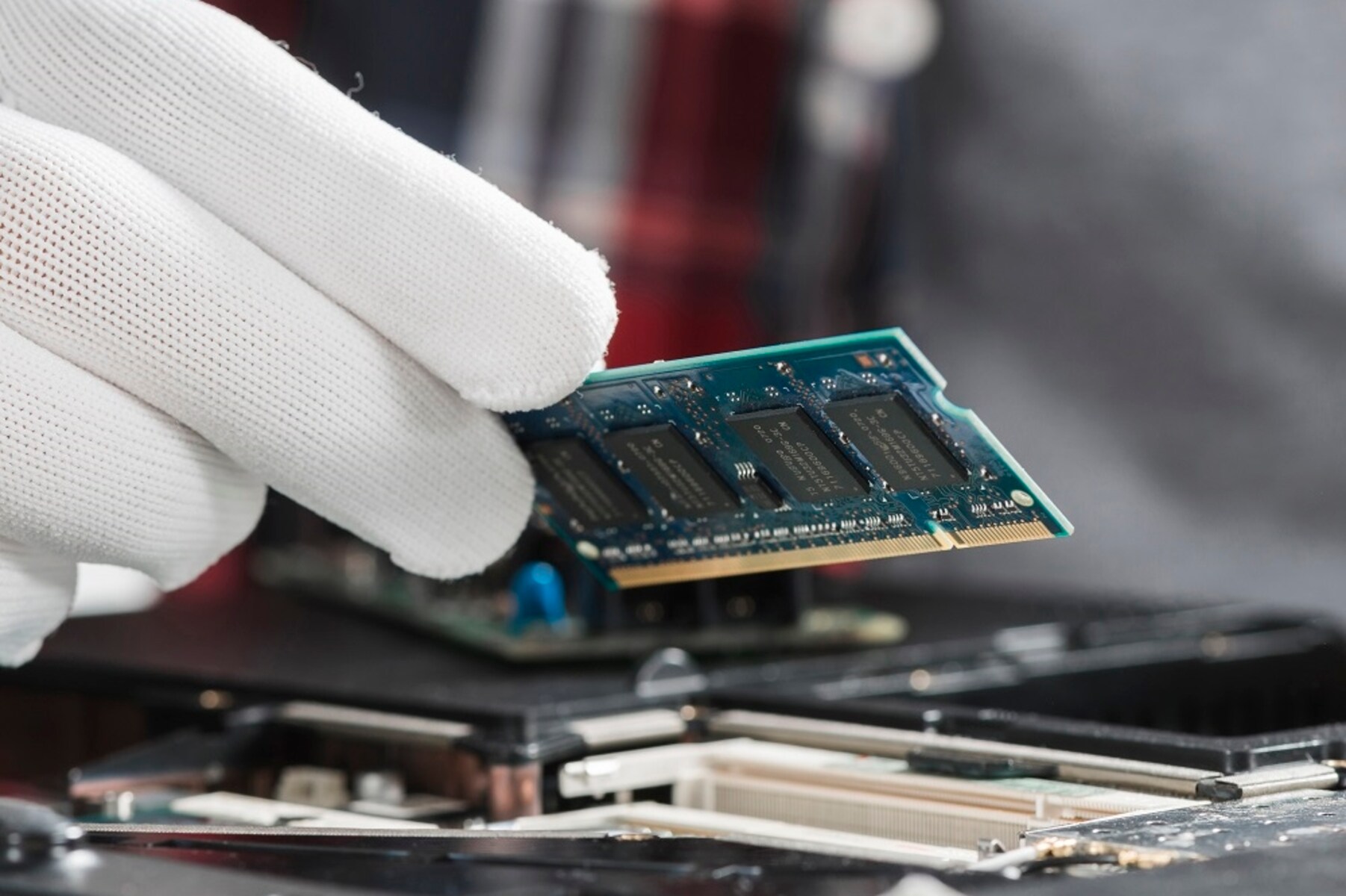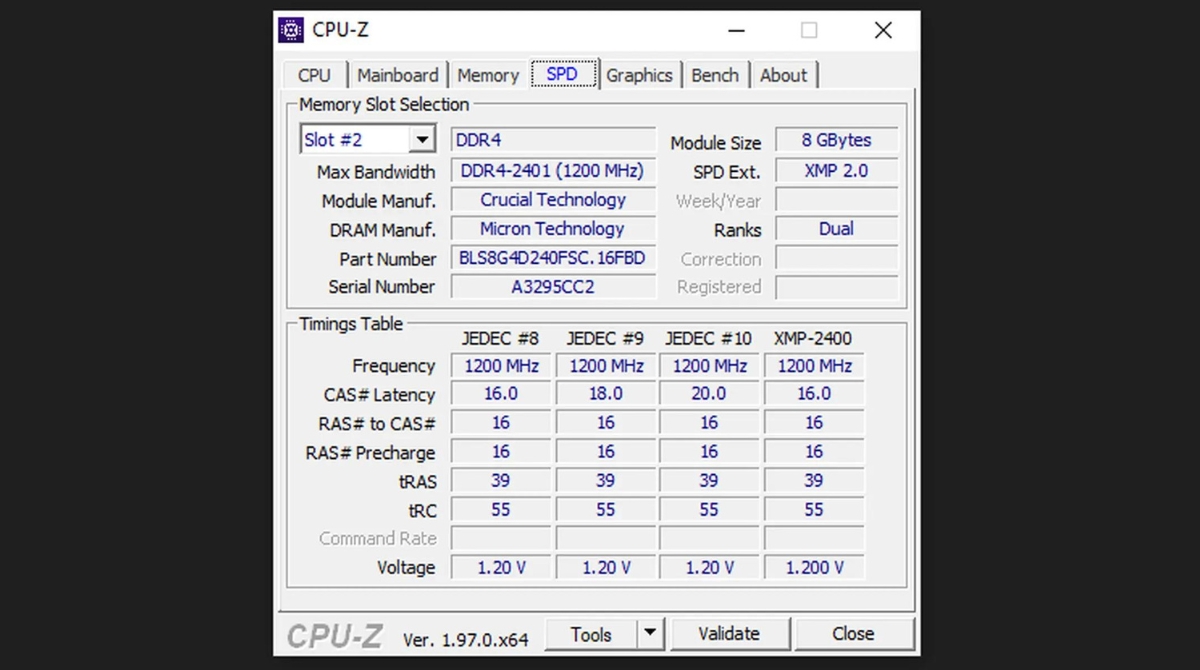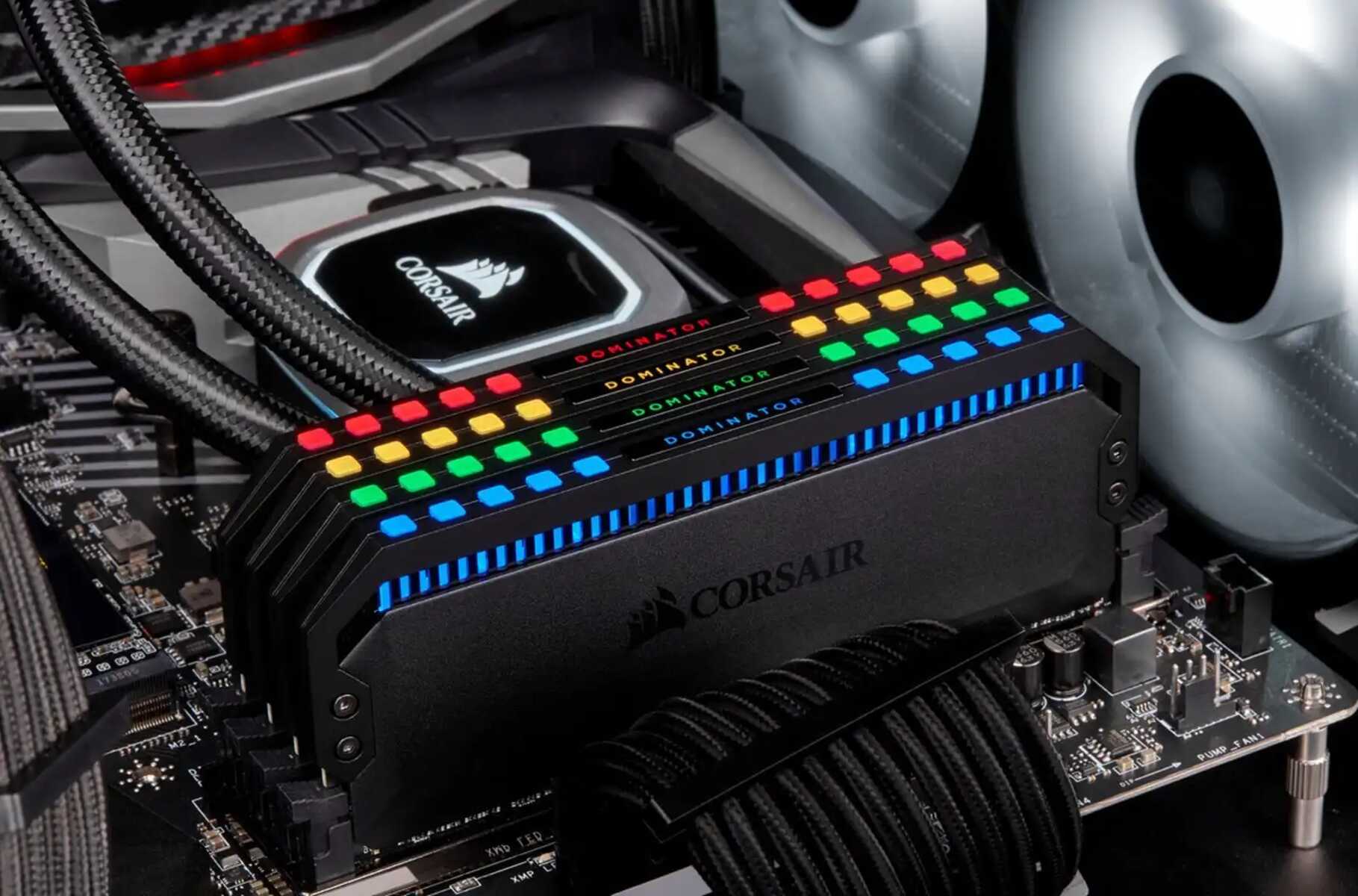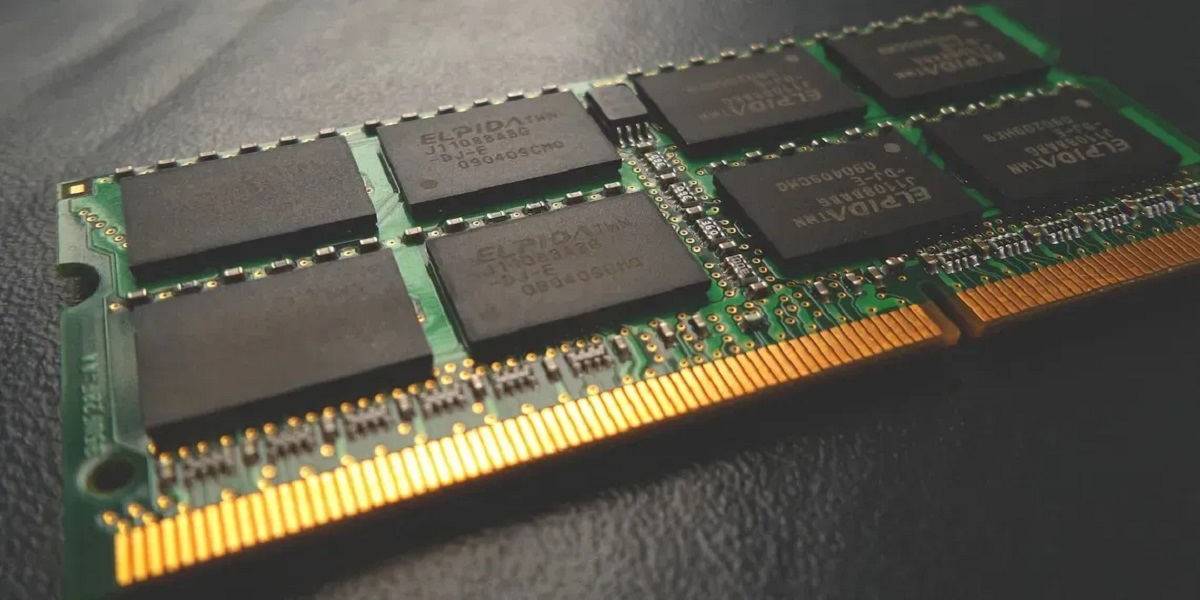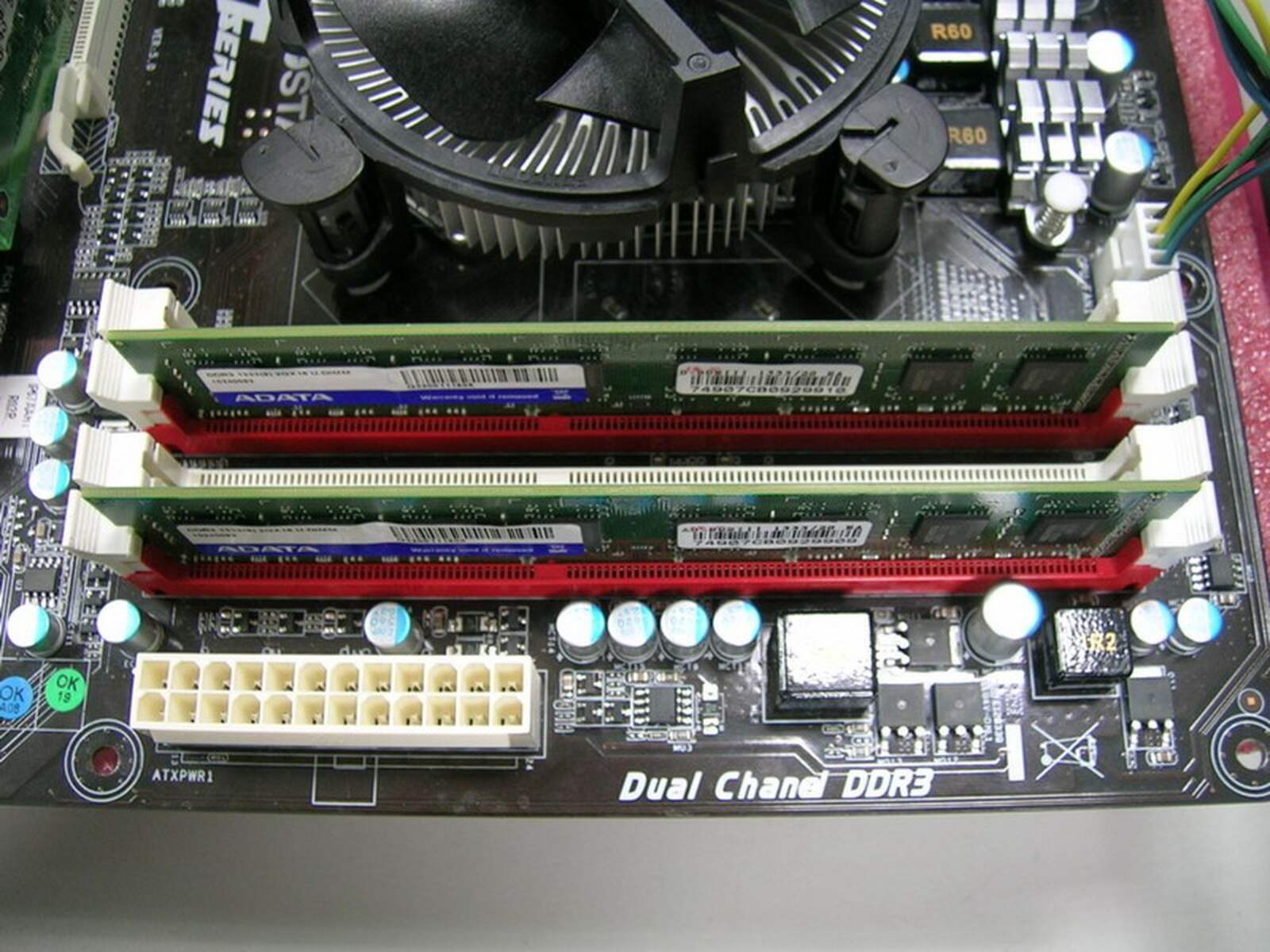Introduction
Upgrading the RAM (Random Access Memory) of your computer can greatly improve its performance, allowing for faster multitasking and smoother overall operation. However, before you can upgrade your RAM, you need to know how many RAM slots are available on your system. This information is crucial as it determines the maximum amount of RAM you can install.
In this article, we will explore various methods to help you determine the number of RAM slots your computer has. We will cover both software-based methods that utilize system tools, as well as hardware-based methods that involve physically inspecting your motherboard. By following these steps, you will be able to accurately identify the number of RAM slots available, ensuring a successful RAM upgrade.
Knowing the number of RAM slots is essential for two key reasons. Firstly, it helps you determine the maximum amount of RAM your system can support. Each RAM slot has a certain capacity, and the total capacity is determined by multiplying the maximum capacity of each slot by the number of slots available. Secondly, it allows you to plan and budget accordingly when purchasing new RAM modules, as you may need to buy multiple modules to fill all the available slots.
Whether you are a tech enthusiast looking to upgrade your gaming rig or a casual user aiming to speed up your everyday tasks, understanding how to determine the number of RAM slots is valuable knowledge. So, let’s dive into the various methods you can use to find this information and make the most out of your RAM upgrade.
Checking the Manual
One of the most straightforward ways to find out how many RAM slots your computer has is by referring to the user manual or documentation that came with your machine. The manual provides detailed information about the specifications and features of your computer, including the number and type of RAM slots available.
Locate the user manual that came with your computer or visit the manufacturer’s website to download a digital copy if you don’t have a physical manual. Look for the section that discusses the hardware specifications or motherboard details. In this section, you should find the information about the RAM slots, including the number of slots available and the maximum capacity supported by each slot.
The advantage of checking the manual is that it provides accurate and reliable information specific to your computer model. However, it may not be the most convenient method, especially if you don’t have immediate access to the manual or if it’s not easily understandable.
If you’re unable to find the manual or prefer a more immediate solution, there are alternative methods we will explore in the following sections. These methods rely on software-based tools and hardware inspection to help you determine the number of RAM slots your computer has.
Using the System Information Tool
An efficient way to determine the number of RAM slots on your computer is by using the built-in System Information tool, which is available on most Windows operating systems. This tool provides a comprehensive overview of your computer’s hardware and software specifications, including information about the RAM configuration.
To access the System Information tool, follow these steps:
- Press the Windows key + R to open the Run dialog box.
- Type “msinfo32” and press Enter or click OK.
- The System Information window will open, displaying a vast amount of information about your computer.
- Navigate to the “System Summary” section on the left-hand side and expand it.
- Select “Memory” from the expanded menu.
- In the right-hand pane, you will find details about your installed RAM, including the number of slots and the capacity of each slot.
Under the “DeviceLocator” column, you will see the physical slot numbers available on your motherboard. The “BankLabel” column provides additional information about each slot if applicable.
It’s important to note that some computer models may have multiple memory sections in the System Information tool, depending on the type of RAM used or additional memory channels. Each section will provide detailed information about the corresponding set of RAM slots.
The System Information tool is a reliable method to quickly determine the number of RAM slots on your computer. However, it may not be available on all operating systems or provide as much detailed information as other software tools and methods. In such cases, alternative methods like checking the BIOS or using third-party software can be useful.
Checking the BIOS
An alternative method to determine the number of RAM slots on your computer is by accessing the BIOS (Basic Input/Output System). The BIOS is a firmware interface that allows you to configure and manage various hardware settings on your computer, including information about the RAM configuration.
To check the RAM slots in the BIOS, follow these steps:
- Restart your computer and continuously press a specific key to enter the BIOS setup. The key to access the BIOS varies depending on the manufacturer; commonly used keys include F2, Del, or Esc. Consult your computer’s manual or manufacturer’s website for the specific key for your system.
- Once you enter the BIOS setup, navigate through the different tabs or menus using the arrow keys on your keyboard.
- Look for a section related to memory or system configuration. The specific name and location may vary depending on the BIOS version and manufacturer.
- In the memory section, you should be able to find information about the installed RAM, including the number of slots and the capacity of each slot.
The BIOS provides detailed information about your computer’s hardware, which makes it a reliable method to determine the number of RAM slots. However, it requires accessing the BIOS setup, which may not be familiar to all users. It’s essential to exercise caution while navigating the BIOS, as any changes made in this interface can potentially affect the system’s stability if not done correctly.
If you’re unsure about accessing or navigating the BIOS, consider using other software-based methods like the System Information tool or third-party software.
Using the Task Manager
The Task Manager in Windows provides a convenient method to check the number of RAM slots on your computer. While the Task Manager is primarily used to monitor running processes and system performance, it also offers a glimpse into the installed RAM configuration.
To access the RAM information through the Task Manager, follow these steps:
- Right-click on the taskbar and select “Task Manager” from the context menu that appears, or press Ctrl+Shift+Esc to open it directly.
- In the Task Manager window, click on the “Performance” tab at the top.
- Click on “Memory” in the left-hand sidebar.
- On the right-hand side, you will find the “Slots used” field, which indicates the number of RAM slots being utilized on your computer.
Note that the Task Manager provides a simple interface to quickly check the number of RAM slots, but it may not provide detailed information about each slot’s capacity or physical location. For more comprehensive details, consider using other software-based methods or checking the manual or BIOS.
It’s worth mentioning that the Task Manager is limited to providing information about the RAM currently installed and in use. If you have empty RAM slots, they may not be reflected in the Task Manager. Therefore, it’s advisable to combine this method with other software or hardware-based methods to get a complete understanding of your computer’s RAM slots.
The Task Manager is readily available on Windows operating systems, making it a convenient option for quickly checking the number of RAM slots without the need for additional software or hardware inspection.
Using Third-Party Software
If you’re looking for a more comprehensive and advanced method to determine the number of RAM slots on your computer, using third-party software can be a valuable option. There are various software tools available that provide detailed information about your computer’s hardware configuration, including the RAM setup.
One such popular software is CPU-Z, which provides in-depth information about your computer’s processor, motherboard, memory, and more. To use CPU-Z to check the number of RAM slots, follow these steps:
- Download and install CPU-Z from the official website (https://www.cpuid.com/).
- Launch CPU-Z and navigate to the “Memory” tab.
- Under the “General” section, you will find the “Slots #” field, which indicates the number of RAM slots available on your system.
- Additionally, CPU-Z provides detailed information about each RAM slot, including the type of memory used, capacity, and timings.
Other popular software tools that can provide similar information include HWiNFO, Speccy, and AIDA64. These tools offer extensive hardware information and can provide accurate details about the RAM configuration on your computer.
It’s important to note that while third-party software tools can provide more comprehensive information compared to built-in methods, they may require installation and might not be as accessible for casual users. Additionally, always make sure to download software from trusted sources to ensure the safety and reliability of your system.
Using third-party software can be beneficial, especially for more advanced users or those who require detailed information about their computer’s hardware. These tools not only provide the number of RAM slots but also offer additional details that can help in understanding the RAM configuration and making informed decisions for upgrades or replacements.
Checking the Motherboard Physical Slots
If you prefer a hands-on approach and want to physically inspect your computer’s hardware to determine the number of RAM slots, you can directly check the motherboard. This method requires opening your computer case and examining the motherboard itself.
Follow these steps to check the physical RAM slots:
- Ensure your computer is turned off and unplugged from the power source for safety.
- Open the computer case by removing the screws or latches on the side panel.
- Locate the motherboard, which is the main circuit board inside your computer.
- Look for rectangular slots on the motherboard that correspond to the RAM modules.
- Count the number of slots available. Typically, RAM slots are arranged in a line or pairs, depending on the motherboard’s design.
- If the slots are empty, you can identify them by the plastic clips or latches on each end that hold the RAM modules in place.
- Make a note of the number of RAM slots you have and their physical location, if necessary.
- After inspecting the motherboard, carefully close the computer case and secure it with the screws or latches.
Checking the motherboard physical slots is a reliable method to determine the number of RAM slots since it directly examines the hardware configuration. However, it requires some technical knowledge and physical access to your computer’s internals. If you’re uncomfortable with disassembling your computer or lack the necessary expertise, it’s advisable to use software-based methods or consult the user manual for accurate information.
By physically inspecting the motherboard, you can get an accurate count of the RAM slots available and better visualize the layout. This information can be valuable when planning a RAM upgrade or troubleshooting any issues related to the RAM configuration.
Conclusion
Determining the number of RAM slots on your computer is a crucial step when planning a RAM upgrade or troubleshooting memory-related issues. By knowing the number of available slots, you can make informed decisions about the type and amount of RAM to install.
In this article, we explored various methods to help you identify the number of RAM slots on your computer. Checking the manual, using the system information tool, accessing the BIOS, utilizing the Task Manager, using third-party software, and inspecting the motherboard physical slots are all effective ways to gather this information.
The manual provides accurate and specific information related to your computer model, while the system information tool, BIOS, and Task Manager offer software-based methods to determine the RAM slots. Using third-party software can provide in-depth hardware details, and physically inspecting the motherboard allows you to visually count the slots.
It’s important to choose a method that suits your comfort level and accessibility. If one method doesn’t work for you, feel free to explore the alternatives. Combining multiple methods can also provide a more comprehensive understanding of your computer’s RAM configuration.
Remember, upgrading your computer’s RAM can significantly enhance its performance, allowing for smoother multitasking and improved overall speed. By following the methods discussed in this article, you can easily determine the number of RAM slots and proceed with confident upgrades or troubleshooting processes.







